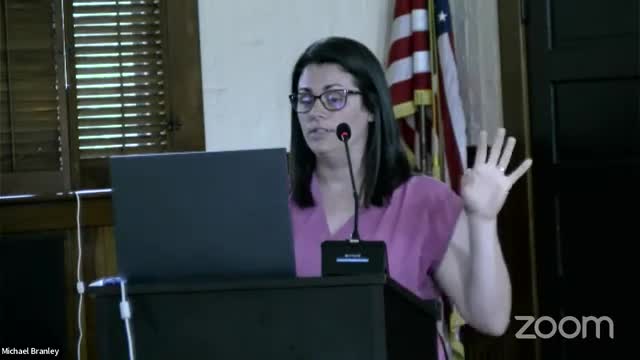Experts unveil critical plan to protect Swansea Lake water quality
July 21, 2024 | West Swanzey, Cheshire County, New Hampshire

This article was created by AI summarizing key points discussed. AI makes mistakes, so for full details and context, please refer to the video of the full meeting. Please report any errors so we can fix them. Report an error »

In a recent government meeting focused on environmental management, officials discussed the findings from watershed and shoreline surveys conducted around Swansea Lake, highlighting significant concerns regarding water quality and pollution sources. The surveys identified 39 sites contributing to surface water pollution, primarily due to road surface erosion, ditch erosion, and runoff from camps and beaches. The unusual weather patterns experienced last year complicated the assessment, revealing vulnerabilities in the watershed management plan.
The shoreline survey, which evaluated properties based on metrics such as buffer presence and erosion, yielded an average disturbance score of 6, indicating that while there are opportunities for improvement, no properties fell into the high-impact category. The shoreline vulnerability score averaged 3.8, suggesting that many homes are situated close to the water, which could exacerbate runoff issues during heavy rain events.
Additionally, a septic system inventory revealed that 59 homes are located within 250 feet of the shoreline, with only 36% having permits on file, indicating many systems may predate formal permitting processes. Approximately 16% of the phosphorus entering the lake is attributed to septic systems, underscoring the need for regular maintenance and inspections.
The meeting also introduced an action plan aimed at improving water quality through community engagement and education. Key recommendations include enhancing water quality monitoring, implementing best practices for stormwater management, and updating municipal ordinances to better protect the lake. Officials emphasized the importance of land conservation and encouraged residents to adopt practices that minimize chemical use and improve shoreline buffers.
Overall, the discussions underscored a collective commitment to safeguarding Swansea Lake's water quality, with a focus on community involvement and proactive management strategies.
The shoreline survey, which evaluated properties based on metrics such as buffer presence and erosion, yielded an average disturbance score of 6, indicating that while there are opportunities for improvement, no properties fell into the high-impact category. The shoreline vulnerability score averaged 3.8, suggesting that many homes are situated close to the water, which could exacerbate runoff issues during heavy rain events.
Additionally, a septic system inventory revealed that 59 homes are located within 250 feet of the shoreline, with only 36% having permits on file, indicating many systems may predate formal permitting processes. Approximately 16% of the phosphorus entering the lake is attributed to septic systems, underscoring the need for regular maintenance and inspections.
The meeting also introduced an action plan aimed at improving water quality through community engagement and education. Key recommendations include enhancing water quality monitoring, implementing best practices for stormwater management, and updating municipal ordinances to better protect the lake. Officials emphasized the importance of land conservation and encouraged residents to adopt practices that minimize chemical use and improve shoreline buffers.
Overall, the discussions underscored a collective commitment to safeguarding Swansea Lake's water quality, with a focus on community involvement and proactive management strategies.
View full meeting
This article is based on a recent meeting—watch the full video and explore the complete transcript for deeper insights into the discussion.
View full meeting
